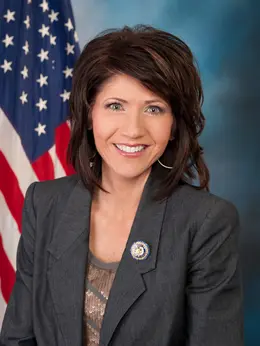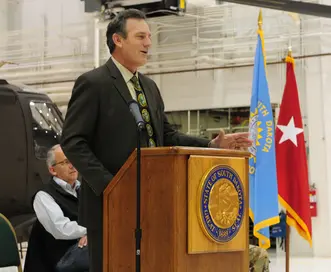In the heart of South Dakota, a frontier state known for its rugged beauty and resilient spirit, a crucial discussion unfolded at the state capital in Pierre. Nathan Lukkes, the executive director of the South Dakota Board of Regents, took the stand before the Legislature’s Joint Appropriations Committee to address proposed budget cuts to the state’s public university system. These cuts, he argued, could have long-term consequences on the state’s educational and infrastructural future.
The proposed $9 million reduction in the repair and maintenance budget for South Dakota’s public universities has been a point of contention. Lukkes expressed grave concerns, stating, “We would hope as you’re wrestling with some of those decisions and looking at what’s the right decision and where to cut, that we can be at the table and find a way that doesn’t put us behind the eight ball 10 to 20 years down the road.”
South Dakota’s public universities, which collectively manage about $3.5 billion worth of infrastructure, have a 10-year plan that identifies $700 million in necessary repair and maintenance work. The current total budget for these institutions stands at $950 million, funded through a mix of state, federal, and student-supported money. Lukkes warned that any reduction could hamper ongoing efforts to maintain and improve university facilities essential for providing high-quality education to the state’s growing student body.
Former Governor Kristi Noem, known for her outspoken leadership, originally proposed these cuts as part of a larger strategy to balance South Dakota’s state budget. These adjustments come in the wake of declining sales tax revenue, the wind-down of federal pandemic aid, and increased Medicaid expenses. Noem, who has since ascended to the role of the U.S. Secretary of Homeland Security, left behind a challenging fiscal landscape that her successor, Governor Larry Rhoden, must now navigate.

Kristi Noem
This budget scenario is further complicated by an additional $2 million cut to the university system’s base funding. “The regents are willing to find a way to make that work,” Lukkes noted, reflecting on the necessity of strategic financial adjustments during economic downturns. “You can’t benefit in the good times and then scream and cry when there’s a downturn and you’re not getting any funding,” he added, emphasizing fiscal responsibility.
Through prudent negotiation and cooperation with legislators, South Dakota’s universities have managed to freeze tuition for five years, with only one year reflecting a mere $100 average increase per student. This initiative successfully elevated South Dakota’s universities from fourth to first in cost competitiveness among their regional peers—a testament to the state’s commitment to affordable higher education.
Meanwhile, as South Dakota’s universities face financial pressure, they have also experienced an impressive growth in enrollment, with student numbers increasing over the last three years to a total of 36,091. This growth underscores the universities’ vital role in nurturing the state’s future workforce, including critical disciplines in health, technology, and agricultural sciences—fields that reflect South Dakota’s economic backbone.
South Dakota, with its strong Norwegian and German cultural heritage and historical roots grounded in Native American tribes, is a land of resilience and innovation. The state’s educational institutions are pivotal in perpetuating this legacy, developing pioneers ready to take on challenges of the contemporary and future economic landscape.

Larry Rhoden
Governor Larry Rhoden, now at the helm, faces the formidable task of steering the state through fiscal uncertainties. His administration’s decisions will significantly impact the ability of South Dakota’s universities to fulfill their educational mission and maintain their facilities.
The path ahead for South Dakota’s education system requires careful navigation of fiscal realities without compromising the quality of education or infrastructure. As these conversations continue, the strength of the South Dakota spirit—the same resilience that carved a community from the wild beauty of the Badlands—will be crucial in overcoming these challenges.
Stay informed about the latest developments in South Dakota’s educational landscape by subscribing to our daily updates. Contact us for more information or to provide insights on this ongoing issue.
